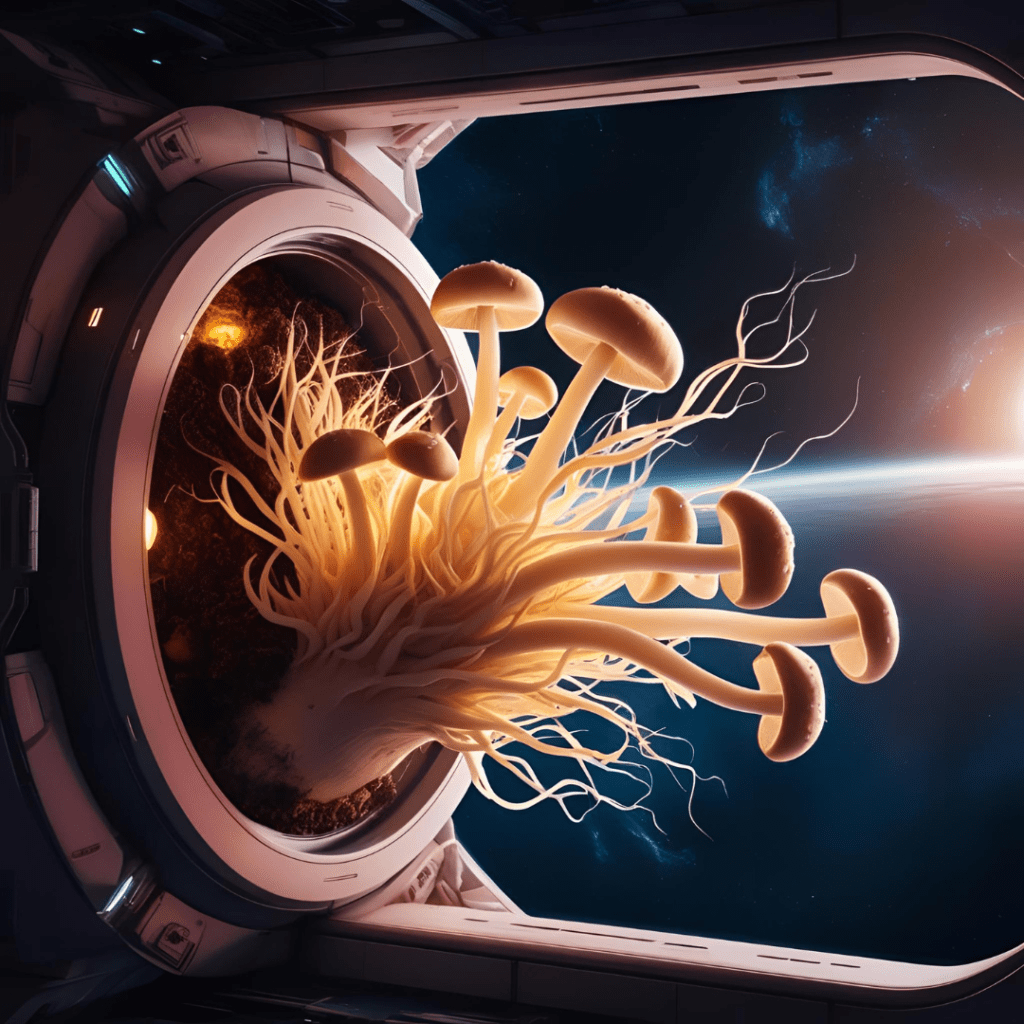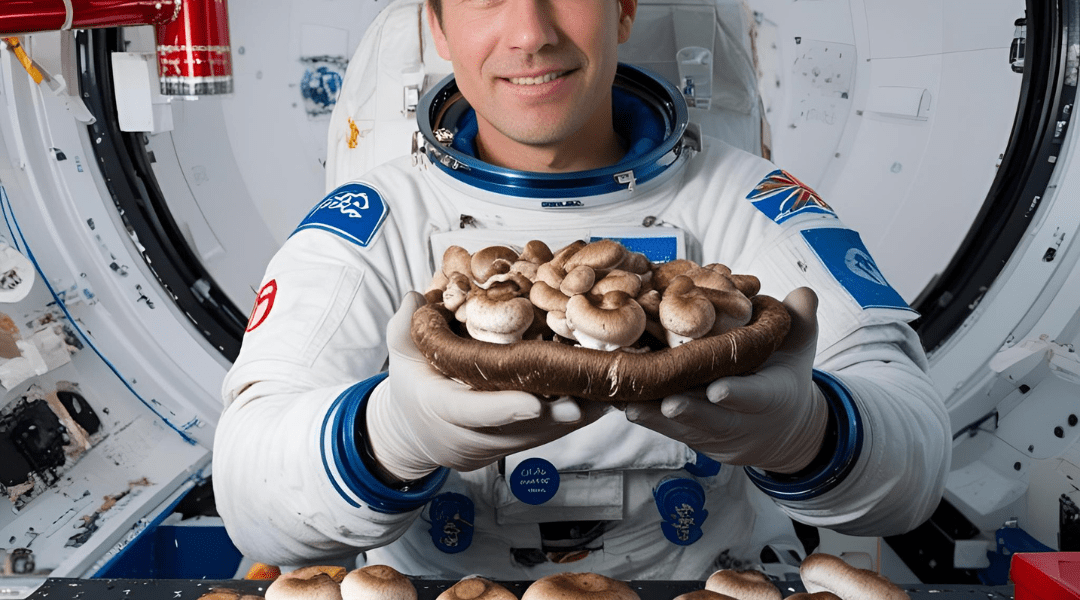Growing Mushrooms in Space: A Revolutionary Step Toward Sustainable Space Farming

Introduction
Space exploration has always been an exciting frontier for humanity, pushing the boundaries of science and technology. While scientists have successfully sent humans to the Moon and rovers to Mars, one of the greatest challenges of long-term space missions is food sustainability. As missions to Mars and beyond become more realistic, the need for a reliable food source in space is more urgent than ever. In a groundbreaking initiative, an Australian company, FOODiQ Global, is set to conduct an experiment to grow oyster mushrooms in space. Dubbed “Mission MushVroom,” this project aims to explore the feasibility of cultivating mushrooms in microgravity conditions. This article explores the significance of this experiment, the science behind it, and the potential implications for future space missions.
The Science of Growing Mushrooms in Space
Mushrooms, particularly oyster mushrooms, are an ideal candidate for space cultivation due to their unique growth requirements. Unlike traditional crops, mushrooms do not require sunlight for photosynthesis. Instead, they grow by breaking down organic matter, making them suitable for closed and controlled environments. Additionally, mushrooms can thrive in low-gravity conditions, which makes them a promising option for space farming.
Mushrooms are grown using mycelium, a root-like network of fungal threads that absorb nutrients and expand over time. In the case of Mission MushVroom, the experiment will test whether mycelium can adapt to the microgravity environment of space. If successful, this could lead to the development of sustainable food production methods for astronauts, reducing dependence on Earth-based food supplies.
Why Mushrooms? The Benefits of Space Fungi
Mushrooms offer several advantages as a food source for space missions:
- Nutritional Value – Mushrooms are rich in essential nutrients such as proteins, vitamins, and antioxidants. They provide a plant-based protein source that can supplement an astronaut’s diet.
- Sustainability – Mushrooms grow on organic waste and require minimal resources, making them an environmentally friendly food option.
- Regenerative Growth – Mycelium has the ability to regenerate, meaning a small amount of starter culture can continuously produce food over time.
- Waste Recycling – In space, managing waste is a critical concern. Mushrooms can grow using organic waste as a substrate, helping to recycle resources efficiently.
- Mental Health Benefits – Gardening has been shown to have psychological benefits, reducing stress and improving mental health. Growing mushrooms in space could serve as a therapeutic activity for astronauts.
Challenges of Growing Mushrooms in Microgravity
Despite the numerous benefits, growing mushrooms in space presents several challenges:
- Microgravity Effects – Gravity plays an essential role in the movement of water, air, and nutrients in traditional farming. In a microgravity environment, scientists will need to ensure that the mycelium can effectively absorb nutrients.
- Temperature and Humidity Control – Mushrooms require a specific range of temperature and humidity to grow. Spacecraft have controlled environments, but maintaining these conditions for fungi growth needs precise adjustments.
- Radiation Exposure – Space is a high-radiation environment, which may affect fungal growth. Scientists will need to determine whether mycelium can withstand these conditions or if protective measures are needed.
Mission MushVroom: The Experiment and Its Goals
Mission MushVroom is set to launch from Florida on March 31, carrying oyster mushroom spores in a specially designed growth chamber. The objective of the experiment is to observe how mycelium behaves in space, whether it can form healthy fungal networks, and if it can be used as a long-term food source.
Researchers will monitor the growth process in real-time, analyzing factors such as:
- The speed of mycelium expansion in microgravity.
- Any mutations or adaptations that occur.
- The overall feasibility of mushroom cultivation in space.
If successful, the findings could pave the way for large-scale mushroom farming on the International Space Station (ISS), lunar bases, and even Mars colonies.
Implications for Future Space Missions
The success of growing mushrooms in space could lead to significant advancements in space farming. Here’s how it could impact future missions:
- Self-Sustaining Colonies – Space travelers will require food systems that do not rely on Earth for resupply. Mushrooms could be a crucial component of self-sustaining space habitats.
- Resource Optimization – Since mushrooms grow on organic waste, they could help create a closed-loop system where food production and waste management are integrated.
- Cost Reduction – Transporting food from Earth to space is expensive. By growing food in space, missions can significantly reduce costs and make long-duration space travel more feasible.
- Interplanetary Agriculture – If mushrooms can thrive in microgravity, they may also be able to grow in extraterrestrial environments, such as on the Moon or Mars.
The Future of Space Agriculture
Mission MushVroom is just one of many exciting developments in space agriculture. Scientists are experimenting with hydroponic farming, algae cultivation, and even lab-grown meat in space. As technology advances, the dream of growing entire ecosystems beyond Earth is becoming closer to reality.
NASA and private space companies, such as SpaceX and Blue Origin, have expressed interest in sustainable space farming methods. If mushroom cultivation proves successful, it could inspire future research into other fungi-based solutions, such as using mycelium to create biodegradable building materials for space habitats.
Conclusion
The idea of growing mushrooms in space may seem like science fiction, but it is quickly becoming a reality. FOODiQ Global’s Mission MushVroom represents a revolutionary step toward sustainable space farming. By exploring the potential of mycelium cultivation in microgravity, this experiment could solve key challenges in food production, waste management, and resource sustainability for future space missions.
As humanity moves closer to becoming an interplanetary species, innovative solutions like space-grown mushrooms will play a crucial role in ensuring long-term survival beyond Earth. Whether on the ISS, the Moon, or Mars, fungi may one day be a staple food source for astronauts venturing into the final frontier. The success of Mission MushVroom could mark the beginning of a new era in space agriculture—one where farming among the stars is no longer just a dream, but a fundamental reality of space exploration.




